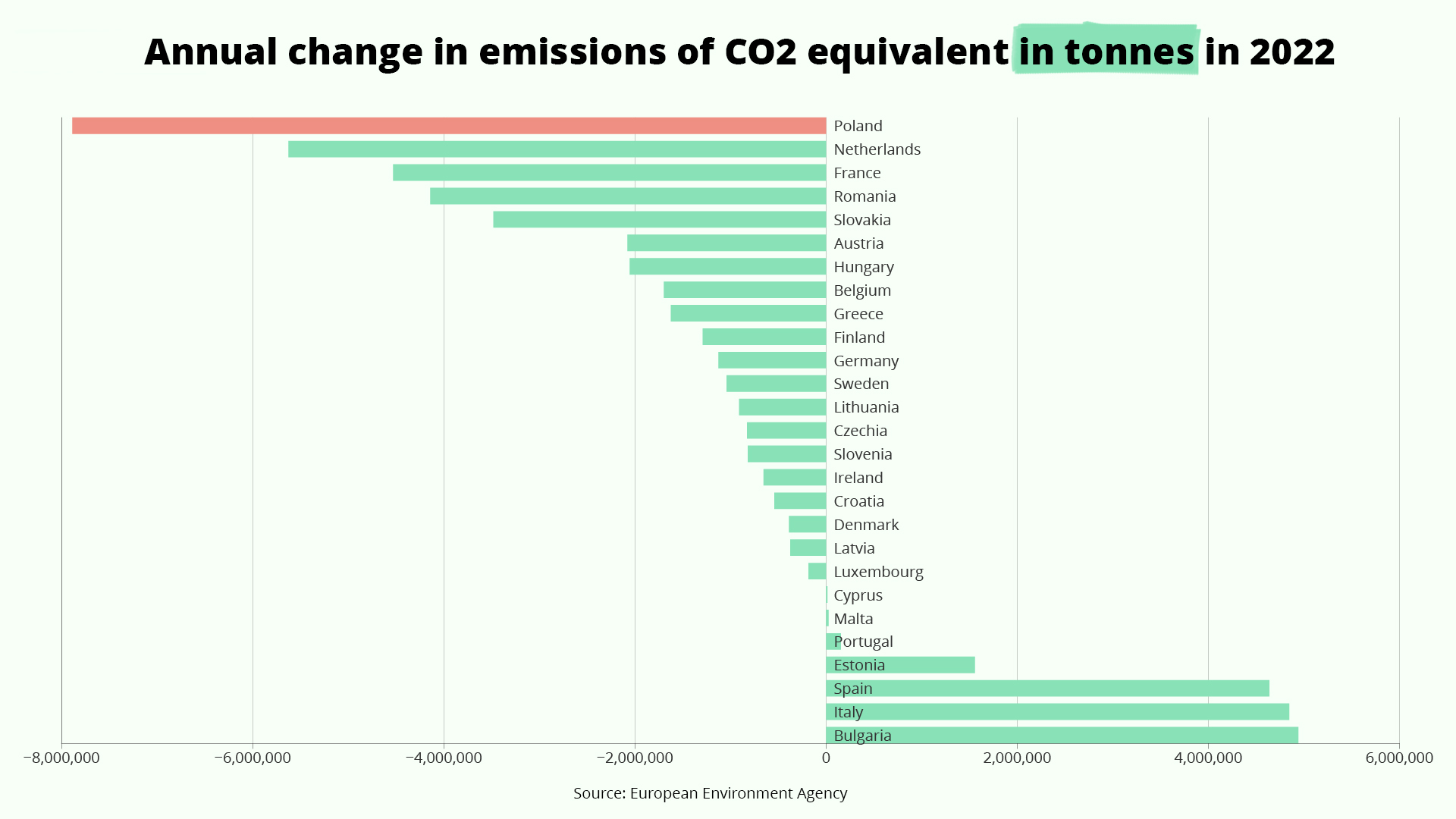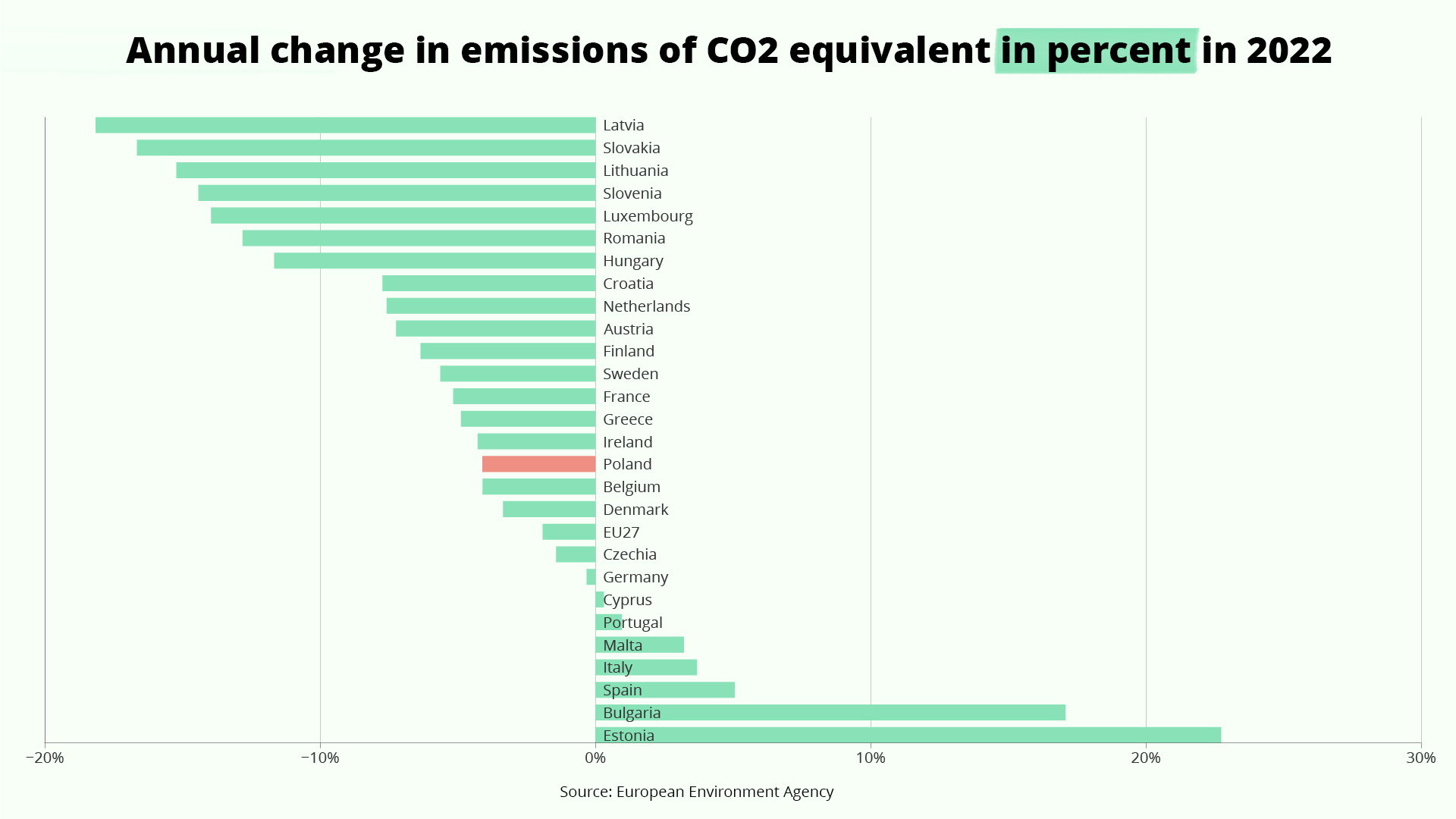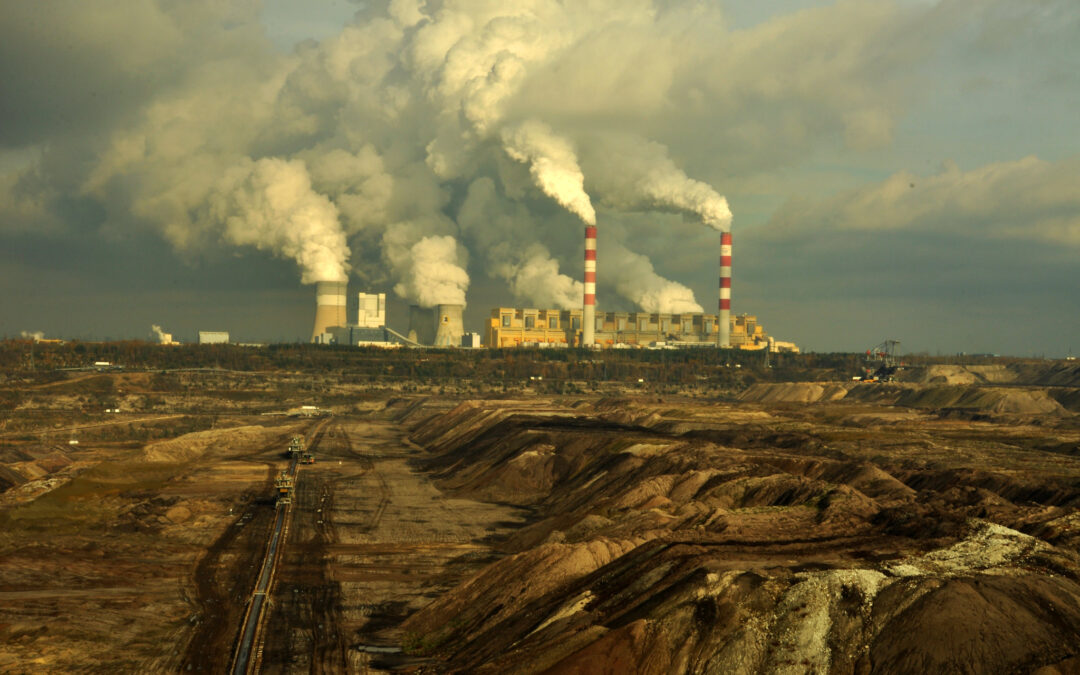Poland recorded the EU’s largest overall fall in emissions last year, producing almost 8 million tonnes less of CO2 equivalent than in 2021, according to new data from the European Environment Agency (EEA). However, in proportional terms, Poland’s decline was, though above the EU average, not among the highest in the bloc.
The EEA’s data from its Emissions Trading System (ETS) show that Poland had 184.15 million tonnes of verified emissions from all stationary installations in 2022, down by 7.89 million tonnes from a year earlier.
That was more than any other country, ahead of the Netherlands (5.62 million tonnes), France (4.53 million tonnes) and Romania (4.14 million tonnes).
Seven countries – Bulgaria, Italy, Spain, Estonia, Portugal, Malta and Cyprus – saw their emissions rise. But the EU as a whole managed to reduce its total by 25 million tonnes of CO2 equivalent.

Poland’s decline came during a year when energy prices were rising sharply, especially for high-emitting coal, on which Poland relies for 70% of its electricity production, by far the highest proportion in the EU.
“Emissions from combustion fell by about 10 million tonnes, partly due to lower production of electricity from (expensive) coal and gas,” notes think tank Forum Energii.
“Due to the high emission factor of electricity production in Poland (the second highest in the EU, after Estonia), Poland ranks high in terms of emissions covered by the ETS…[which] account for approximately half of all national emissions,” it added.
Poland has been rated as the EU's least green country in a new ranking.
The EU-funded study takes into account the state of the environment, its effects on quality of life, and efforts to address climate issues https://t.co/hKyeucSzBl
— Notes from Poland 🇵🇱 (@notesfrompoland) November 5, 2022
Poland last year also saw a continued rise in renewable energy production. Micro-installations – small systems that produce renewable energy up to a capacity of 50kW – contributed more than twice as much power to Poland’s electricity network last year than in 2021.
Poland installed the third most new solar capacity in the EU last year and also has Europe’s fastest-growing market for heat pumps.
However, although Poland recorded the largest overall decline in CO2 emissions, in relative terms its drop of 4% compared to 2021 was only the 16th largest in the EU. The biggest relative cuts were recorded in Latvia (18%), Slovakia (16.7%) and Lithuania (15.2%).

Despite a big nominal drop, Poland’s emissions still remain almost 8% above the low recorded in 2020, when pandemic-induced lockdowns forced many businesses to halt operations. Compared to 2005, the first year for which the European Environment Agency provides data, Poland’s emissions have fallen by 9.35%.
Poland recently ranked as the EU’s least green country in an index that takes into account the state of the environment, its effect on quality of life, and efforts by politicians, businesses and citizens to address climate issues.
However, under pressure from Brussels, as well as higher energy prices, Warsaw has been taking steps towards reducing emissions by moving towards more nuclear and renewable energy. The government intends for two thirds of Poland’s electricity to be generated from such sources by 2040.
Poland’s climate ministry has outlined plans for the country to generate three quarters of its electricity from zero-emissions sources by 2040, with 51% coming from renewables and almost 23% from nuclear https://t.co/CksVqGQXkV
— Notes from Poland 🇵🇱 (@notesfrompoland) April 4, 2023
Main image credit: Greenpeace Polska/Flickr (under CC BY-ND 2.0)

Alicja Ptak is senior editor at Notes from Poland and a multimedia journalist. She previously worked for Reuters.



















